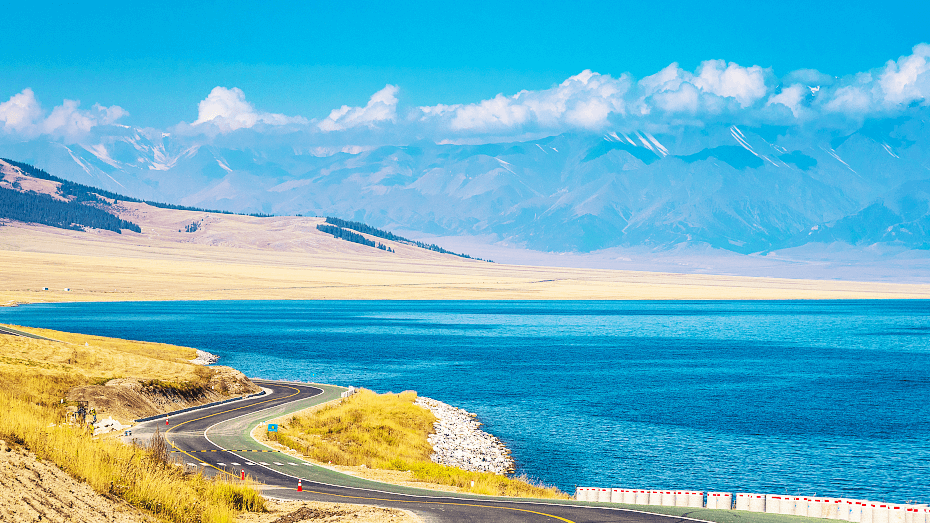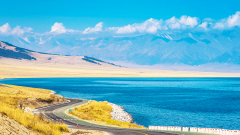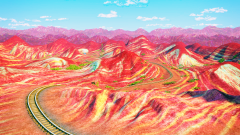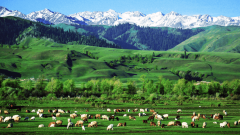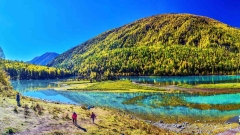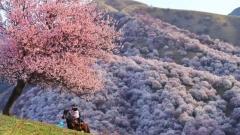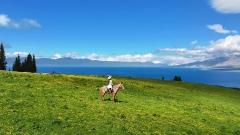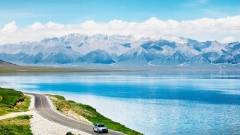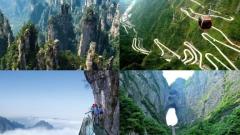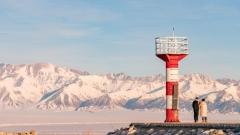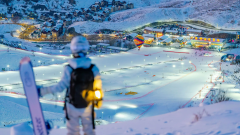1. Introduction to Duku Highway: Xinjiang’s Crown Jewel of Road Trips
The Duku Highway—short for Dushanzi to Kuqa Highway—is often hailed as one of the most breathtakingly beautiful roads in all of China, and indeed, among the most awe-inspiring routes in the world. Officially designated China National Highway 217, the Duku section spans approximately 560 kilometres, carving its way through the Tianshan Mountains, lush alpine meadows, deep river gorges, barren desert ridges, and snowcapped peaks.
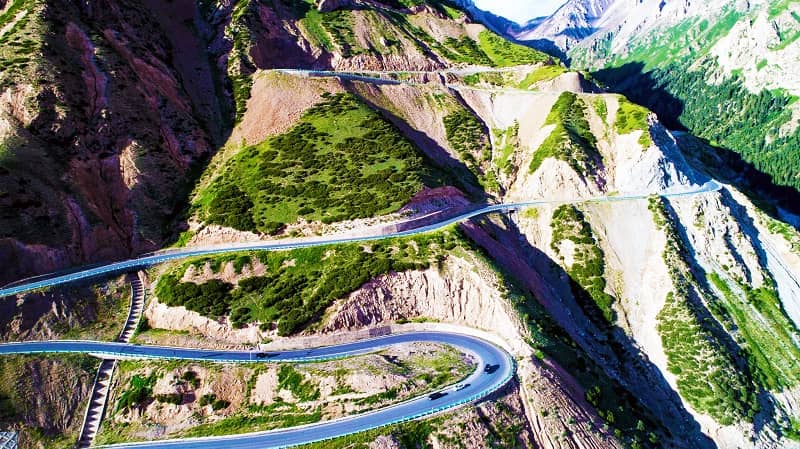
Dushanzi to Kuqa Highway
Constructed in the 1970s and only fully opened to the public in recent years, Duku Highway is a seasonal road, closed during winter due to heavy snowfalls and avalanche risks. Yet for the months it is accessible—typically June through October—the Duku Highway becomes a corridor of natural wonder, cultural discovery, and sheer visual drama.
Unlike the famed highways of Tibet or the iconic Route 66 of the United States, Duku is still relatively undiscovered on the international stage, giving those who make the journey a rare chance to immerse themselves in the raw, unfiltered majesty of Xinjiang without the crush of mass tourism. It bridges northern and southern Xinjiang, linking the verdant grasslands of the Ili region to the mysterious canyons of the Tarim Basin, all while threading through the spine of the Tianshan range, a UNESCO World Heritage site.
Whether you’re a road trip enthusiast, a photographer, a cyclist, or just someone yearning for an unforgettable escape into wild frontiers, Duku Highway is a pilgrimage well worth undertaking.
2. Must-See Attractions Along Duku Highway
Duku is not merely a transit route; it is an epic journey with dozens of scenic and cultural jewels dotting the way. The following highlights represent some of the essential stops that no traveller should miss.
a. Dushanzi Grand Canyon
At the northern gateway to the highway lies the Dushanzi Grand Canyon, a stunning landscape carved by glacial melt and wind erosion. Its jagged ravines and striated earth tones present an otherworldly vision—photogenic, serene, and raw.
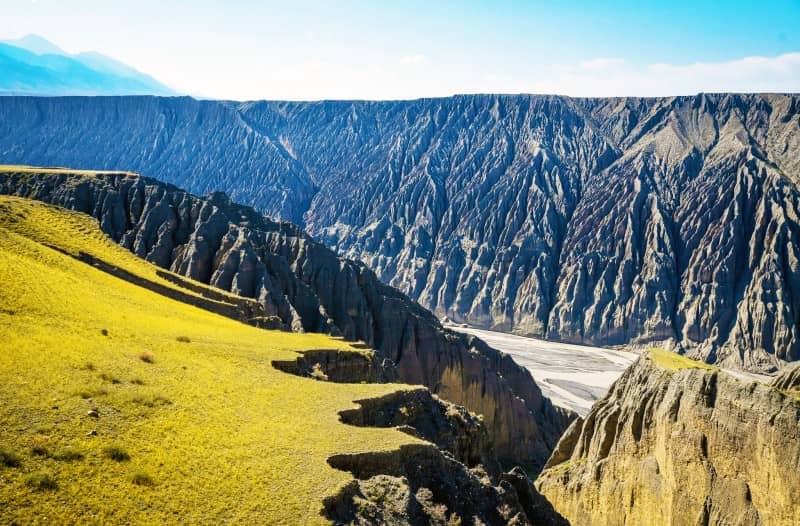
Dushanzi Grand Canyon
b. Tangbula Grasslands
Heading southward, the Tangbula Grasslands offer vast expanses of green plains backed by distant snowy peaks. During summer, the meadows bloom with wildflowers, and herds of sheep and horses graze under wide skies, making this a tranquil picnic or camping site.
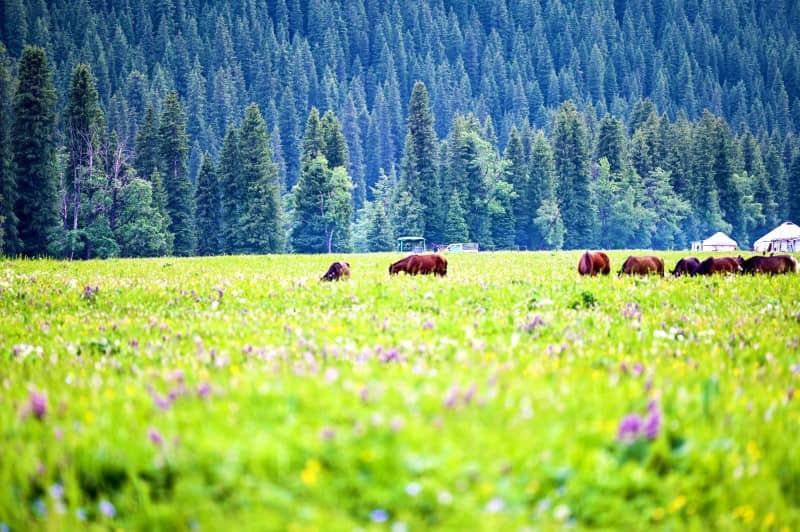
Tangbula Grasslands
c. Bayanbulak Grassland and Swan Lake
Nestled deep within the Tianshan interior, the Bayanbulak Grassland is the second-largest grassland in China. Here lies the ethereal Swan Lake, a nature reserve where rare migratory swans gather. The region is also steeped in Kazakh nomadic culture, with yurts dotting the valley floors.
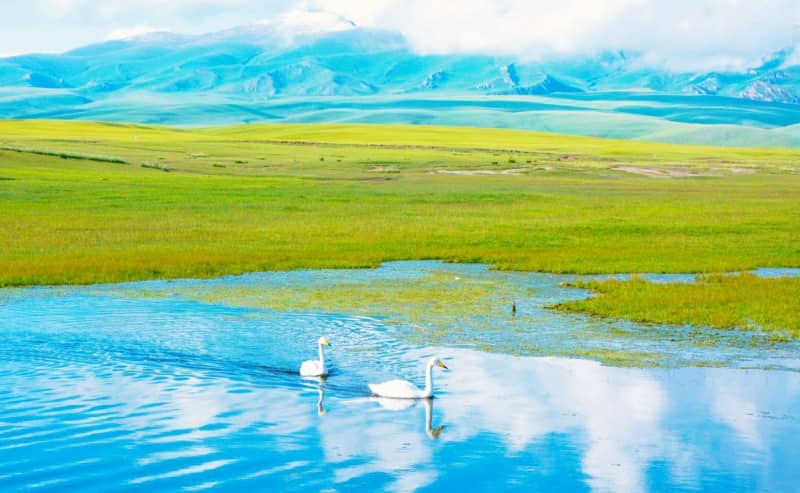
Bayanbulak Grassland and Swan Lake
d. Heavenly Peak (Tianshan Shenmi Canyon)
This remote canyon region is an absolute wonder of erosion, known for its intricate rock formations, haunting silence, and a sense of spiritual isolation. It’s a paradise for hikers and geology enthusiasts.
e. Kuqa Grand Canyon
As you approach the southern end of the Duku Highway, the landscape becomes more arid and dramatic. The Kuqa Grand Canyon, also called Tianshan Mysterious Grand Canyon, stuns with its red sandstone cliffs, narrow slot pathways, and echoes of ancient Buddhist cave temples hidden in the folds of the rocks.
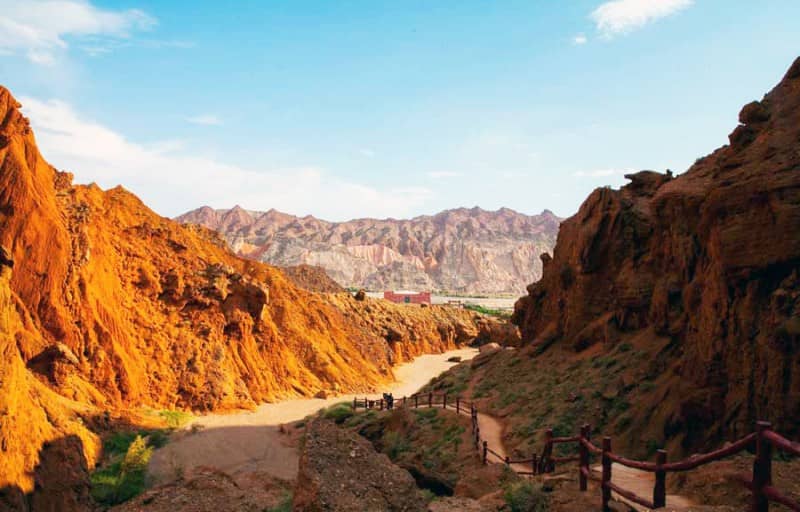
Kuqa Grand Canyon, aka Tianshan Mysterious Grand Canyon
3. Weather Conditions and Best Time to Travel
Timing your trip is vital when planning a journey on Duku Highway. Owing to its high-altitude terrain and volatile climate, the road is only open for a limited period each year.
a. Best Months to Visit
The Duku Highway typically opens from early to mid-June and closes by early October, depending on weather conditions. The best time to travel is between late June and early September, when the snow has fully melted, the meadows are lush, and the skies are often clear.
b. Temperature and Altitude
Travellers must be prepared for dramatic shifts in temperature. The highway rises above 3,400 metres at some points, which means cold nights are common even in summer. Daytime temperatures can vary from 10°C to 25°C, but sudden storms or cold snaps can occur.
c. Road Conditions and Closures
Due to snowmelt and unpredictable summer storms, temporary road closures can occur even in peak season. Landslides, rockfalls, and flooding are not uncommon, particularly in the more rugged passes. It is wise to check local advisories and consult with your accommodation or driver regarding conditions before departure.
4. Preparation, Gear, and Travel Tips
Duku Highway is no Sunday afternoon drive. It demands preparation, flexibility, and a sense of adventure. Whether self-driving or joining a tour, here are key recommendations to ensure a safe and memorable journey.
a. Vehicle and Fuel
If you plan to self-drive:
-
A 4WD vehicle is strongly recommended due to unpredictable surfaces.
-
Fill up your fuel tank in Dushanzi or Kuqa, and carry spare fuel, especially when exploring side routes.
-
Prepare for long stretches without service stations.
If you don’t want to handle the hassles, you can also choose to join our tour:
b. Essentials to Pack
-
Warm clothing, even in summer (layers, thermal wear, gloves, and windproof jackets).
-
Sun protection: sunglasses, sunscreen, lip balm with SPF.
-
Hydration and snacks: Bring plenty of water, energy bars, and dried fruit.
-
First-aid kit: Include altitude sickness tablets if you are sensitive to elevation.
-
Offline maps/GPS: Mobile signal is unreliable in high mountain passes.
c. Permits and ID
You do not typically need special permits for Duku Highway itself, but always carry:
-
Your passport or national ID.
-
If travelling with a foreign licence, ensure you’ve checked driving regulations or hired a licensed driver.
d. Health and Safety Tips
-
Altitude sickness can affect even healthy individuals; acclimate slowly and drink plenty of water.
-
Be wary of remote zones with minimal infrastructure; inform someone of your route and expected schedule.
-
Respect local customs, particularly when passing through Kazakh and Uyghur communities.
The Duku Highway is not just a road—it’s an odyssey through geologic time, cultural tapestry, and natural splendour. Every bend reveals a new landscape, every village whispers stories of resilience and beauty. For those with a sense of wonder and a readiness to venture off the beaten path, this legendary route through Xinjiang’s heartland offers not just views—but vision. Let Duku Highway challenge your ideas of isolation and reward you with the unforgettable gift of perspective.



